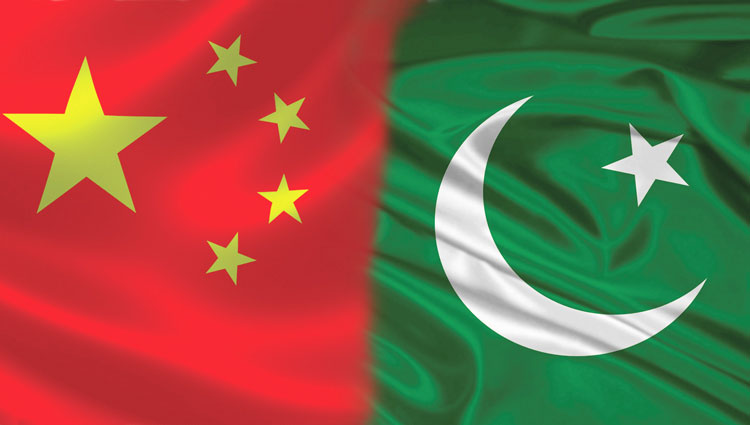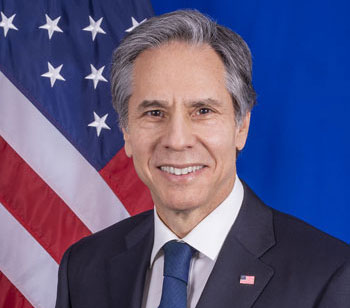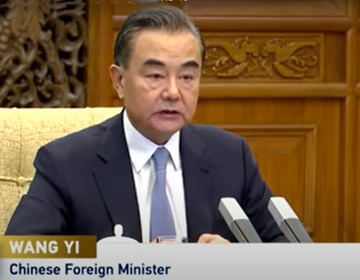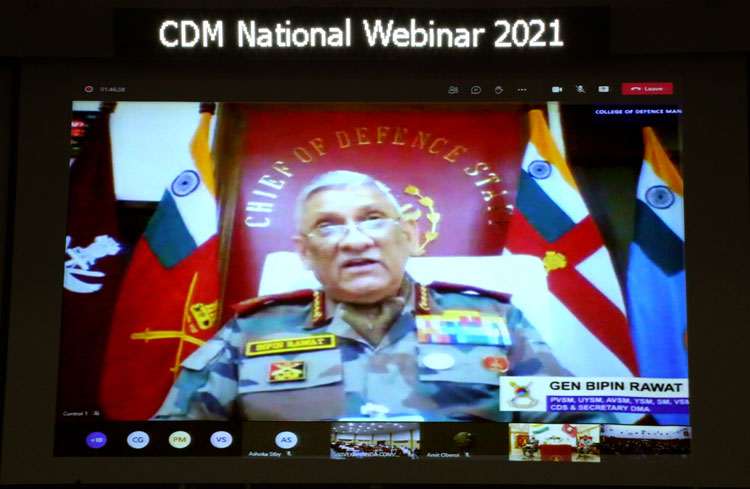INDIAN ARMED FORCES CHIEFS ON OUR RELENTLESS AND FOCUSED PUBLISHING EFFORTS

The insightful articles, inspiring narrations and analytical perspectives presented by the Editorial Team, establish an alluring connect with the reader. My compliments and best wishes to SP Guide Publications.

"Over the past 60 years, the growth of SP Guide Publications has mirrored the rising stature of Indian Navy. Its well-researched and informative magazines on Defence and Aerospace sector have served to shape an educated opinion of our military personnel, policy makers and the public alike. I wish SP's Publication team continued success, fair winds and following seas in all future endeavour!"

Since, its inception in 1964, SP Guide Publications has consistently demonstrated commitment to high-quality journalism in the aerospace and defence sectors, earning a well-deserved reputation as Asia's largest media house in this domain. I wish SP Guide Publications continued success in its pursuit of excellence.
- MoD initiates comprehensive review of Defence Acquisition Procedure 2020, pushes for defence reforms
- G7: The Swansong
- Kalinga Connect: South Asia to Polynesia
- Advanced MRSAM for India for a greater firepower
- Must Credit DRDO for Operation Sindoor, now what is next for defence R&D?
- Operation Sindoor | Day 2 DGMOs Briefing
- Operation Sindoor: Resolute yet Restrained
The China-Pakistan Threat
In an article published in Pakistani Media, Chinese Foreign Minister Wang Yi explained that China will continue to work with Pakistan to strengthen their iron friendship and that relations between the countries have become a strategic asset that both sides cherish
 |
The Author is Former Director General of Information Systems and A Special Forces Veteran, Indian Army |

China has announced a 6.8 per cent hike in the defence budget, over 2020, which comes to $209 billion - the highest ever. This is just the official part whereas actual defence budget would be more. China has no land threat even as our Home Minister signaled in Parliament of taking back Aksai Chin. The expanding China threat has caused affected countries in the region to hike their defence budgets considerably, which ironically India has not.
Addressing a webinar organised by the College of Defence Management (CDM), Secunderabad on March 4, 2021, Chief of Defence Staff General Bipin Rawat stated that a belligerent China will continue to assert itself by seeking to establish dominance in countries surrounding India along land borders as well as the Indian Ocean Region (IOR). He further said that the Armed Forces need to be prepared for military threats from both China and Pakistan by transforming themselves into integrated war-fighting machinery through the setting up of unified theatre commands and other such measures.
A report by the US Department of Defence (DoD) to the US Congress titled ‘Military and Security Developments involving the PRC 2020’ includes the following:
- CCP has a strategic end state that it is working towards, which if achieved and its accompanying military modernisation left unaddressed, will have serious implications for US national interests and the security of the international rules-based order;
- China’s leaders stress meeting key military transformation markers set for 2020 and 2035, seeking to align PLA transformation with overall national modernisation and field a “world-class” military by 2049;
- PRC conducts influence operations to achieve outcomes favorable to its strategic objectives by targeting cultural institutions, media organisations, business, academic, and policy communities, and;
- PRC has likely considered Myanmar, Thailand, Singapore, Indonesia, Pakistan, Sri Lanka, United Arab Emirates, Kenya, Seychelles, Tanzania, Angola, and Tajikistan as locations for PLA military logistics facilities.


The US Secretary of State Antony Blinken has recently stated that the main geopolitical challenge for the US in the 21st Century is China, against the background of which Russia or the Middle East fade. Blinken said that Washington will act in relations with Beijing from a position of strength. America’s Indo-Pacific Command (INDOPACOM) is asking for an additional $27 billion from 2022 to 2027 to contain China, including an additional $4.6 billion for the 2022 tax year. According to Admiral Philip Scott Davidson, Commander (INDOPACOM), the time has passed when the US tried to concentrate its main forces “on just a few bases in the region." INDOPACOM wants additional money to deploy new missiles, air defence systems, radars, and test ranges in the region to meet China’s advanced missile capabilities.
In an article titled “An Iron Friendship Firming in a New Era” published in Pakistani media on March 2, 2021, Chinese Foreign Minister Wang Yi explained that no matter how regional and international landscapes may evolve and what challenges and risks may arise, China will continue to work with Pakistan to strengthen their iron friendship. Yi noted that relations between the countries have become a strategic asset that both sides cherish, and added, “In difficult times, one always reaches out a helping hand to another as early as possible. Such mutual support and assistance are not bound by any conditions and are pure acts of goodwill and friendship. Let us clarify that this year marks the 70th anniversary of the establishment of diplomatic relations between China and Pakistan.”
How serious are we about the enlarging China muscle as also the dual China-Pakistan that the CDS spoke of with existing PLA presence in Pakistan and Pakistan Occupied Kashmir likely to grow in coming years? As of now, the disengagement in Eastern Ladakh is only partial, which has resulted in India giving up its strategic advantage by vacating the Kailash Range while China retains its strategic advantage in the Depsang Plains. Moreover, China will demand buffer zones at friction points, forcing us to withdraw more in own territory, in case there is further disengagement at all. Yet opinions are being aired that options for China are closed. Nothing can be farther from the truth with far better border infrastructure and communication on the Chinese side of the 3,488 km Line of Actual Control (LAC).

The CDS has spoken about the unified theatre commands, which we seem to be hurrying into without a national security strategy. But establishing these is only a small part for meeting the rising threats to India’s security. Without providing requisite ‘hard power’ to the Armed Forces, such reorganisation will not mean much. In context of unified theatre commands, it would also be good to examine PLA’s Strategic Support Force that combines functions of intelligence, technical reconnaissance, electronic warfare, cyber warfare and space warfare. We should derive merits from this for inclusive transformation, even though it may be difficult for the bureaucracy to comprehend.
China seeking dominance in countries surrounding India is no doubt important. But as important, if not more, is China seeking domination over India using direct and indirect means, also through influence operations. It is often said that war is not an option for China. No doubt China would like to win a war without fighting but does that mean China will not go to war when it infers it cannot achieve its objectives without fighting? China’s military modernisation is progressing at incredible pace and Pakistan is more of an extension of the China threat. Significantly, India continues to be at strategic disadvantage vis-à-vis China and Pakistan at the sub-conventional level.
Many are of the view that India should consolidate its power before confronting China. By when is that consolidation likely to happen on peanuts category defence budgets and the widening gap in hard power between the militaries of both countries? We need to get serious about coping with the China-Pakistan threat rather than relying largely on diplomacy and media manipulation to impress own population.





